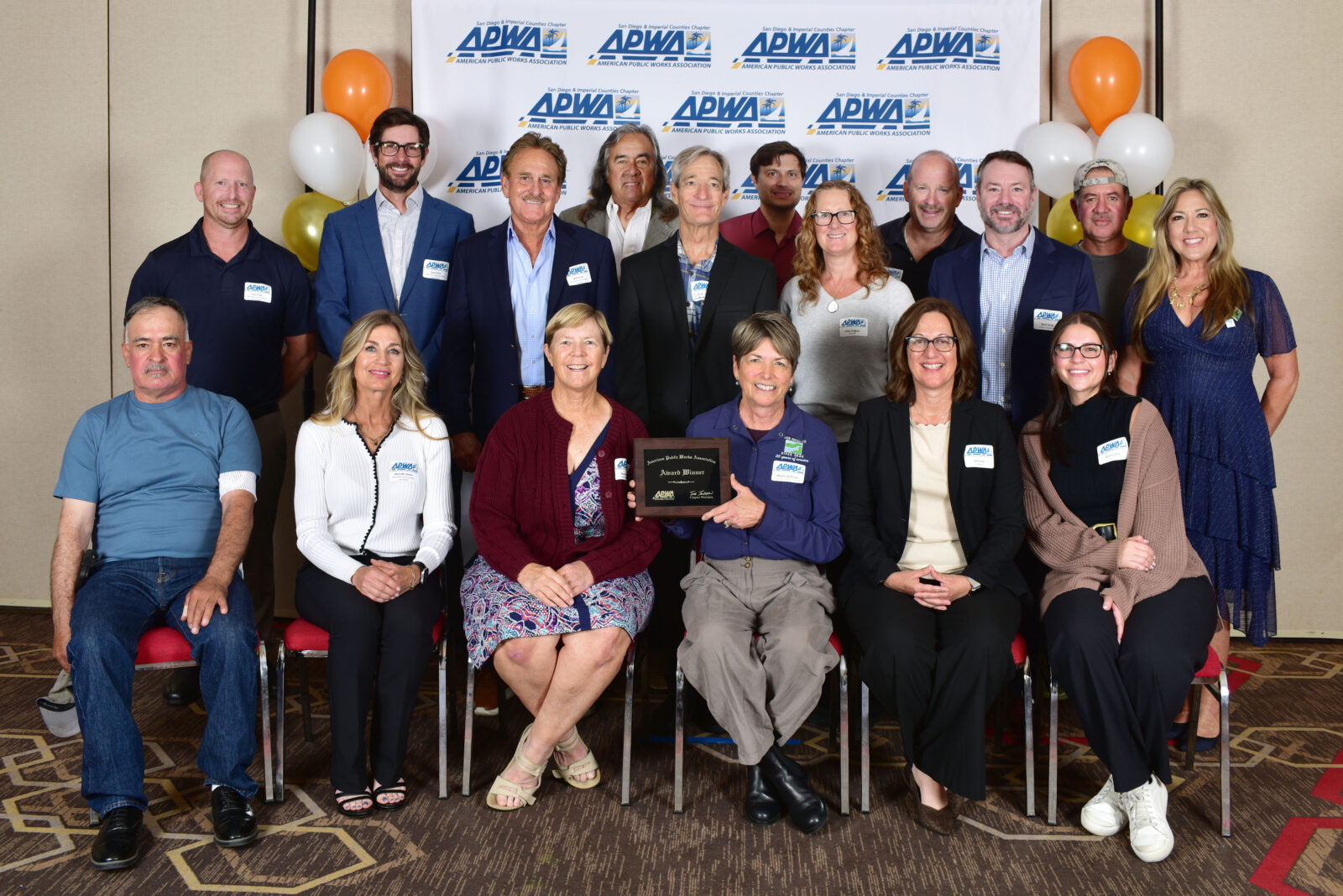
The San Dieguito Lagoon Phase II Restoration Project recently earned top honors, receiving the 2025 Project of the Year award from the American Public Works Association (APWA). We also received the Outstanding Sustainable Engineering Project recognition from the American Society of Civil Engineers (ASCE) San Diego Section.
The Reasons It Establishes New Market Standards
These accolades highlight the project’s innovative approach to environmental restoration combined with advanced engineering practices. For anyone involved in infrastructure or environmental planning, this project sets a new benchmark for sustainable, resilient design that benefits communities and ecosystems alike.
Precision Earthwork
For the San Dieguito Lagoon, over a million cubic yards of material were excavated and placed using GPS-guided earthmoving equipment and real-time topographic mapping systems. This allowed for exact grading of marsh plains, tidal channels, and upland areas, all essential to support a wide range of native vegetation and wildlife habitats.
By reconstructing these natural elevation zones, the project enabled a self-sustaining wetland system where estuarine functions and biodiversity were able to recover.
Hydrologic Engineering
Water flow is essential to successful lagoon restoration. Using tidal prism modeling, channel design optimization, and sediment transport simulation makes sure that the new areas receive proper tidal flushing. This approach preserves salinity balance and nutrient cycling while preventing stagnation and sediment buildup common in poorly restored wetlands.
Beneficial Material Reuse
Sustainably managing large volumes of dredged sediment is one of the toughest challenges in restoration projects, but this initiative demonstrated how it can be done effectively. Material was profiled by sampling and testing prior to excavation to determine possible reuse scenarios.
During excavation, material was handled, stored, and placed based on these test results and used for berm and trail construction, upland habitat creation, and as suitable soil for planting. This included the incorporation of organics from clear and grub operations. Virtually all off-site disposal was eliminated, and imports were limited to only those materials not available on-site, such as aggregates and trail surfacing materials. This approach clearly shows that environmental responsibility and construction efficiency can go hand in hand.
Designing with Climate Resilience
Sea-level rise and extreme weather pose increasing risks to coastal areas. This project addressed these challenges with forward-looking design strategies, such as transitional habitat zones and berms to protect habitats from flood events
This resilient infrastructure safeguards inland areas while supporting the long-term health of the watershed. Additionally, the restored wetlands function as carbon sinks, aiding regional climate mitigation through improved carbon sequestration.
Ecological Restoration
Native plant communities were reintroduced across multiple elevation zones to attract birds, support aquatic life, and promote healthy soil structure. These outcomes reflect the power of using precision grading operations in combination with soil profiling and amending to promote long-lasting ecological functions.
This approach supported:
- Shorebird nesting and foraging areas
- Juvenile fish nursery zones in shallow tidal channels
- Pollinator-supporting uplands and transition buffers
- Improved water filtration through natural vegetation uptake
Community Engagement and Environmental Education
Local residents, schools, and environmental groups were engaged through outreach programs, site tours, and educational workshops. This involvement raised awareness of the lagoon’s ecological importance and encouraged ongoing care to prevent pollution and misuse.
By including the community, trust was built and ensured the project reflected local values, creating a lasting bond between people and the restored environment.
Meeting Complex Regulatory Requirements
Environmental compliance in coastal areas is challenging but essential for project success. For the San Dieguito Lagoon restoration, we collaborated closely with local, state, and federal agencies from start to finish.
All CEQA and NEPA requirements were followed, environmental monitoring was performed during construction operations, and a robust monitoring program, along with a long-term maintenance program, has been implemented post-construction. Our strong focus on environmental responsibility helped the project exceed all standards.
We at Marathon Construction Corporation are proud of what we’ve accomplished at San Dieguito Lagoon, and we’re just as proud of the community that stood with us. If you’re ready to bring people, science, and sustainability together, let’s start the conversation.

